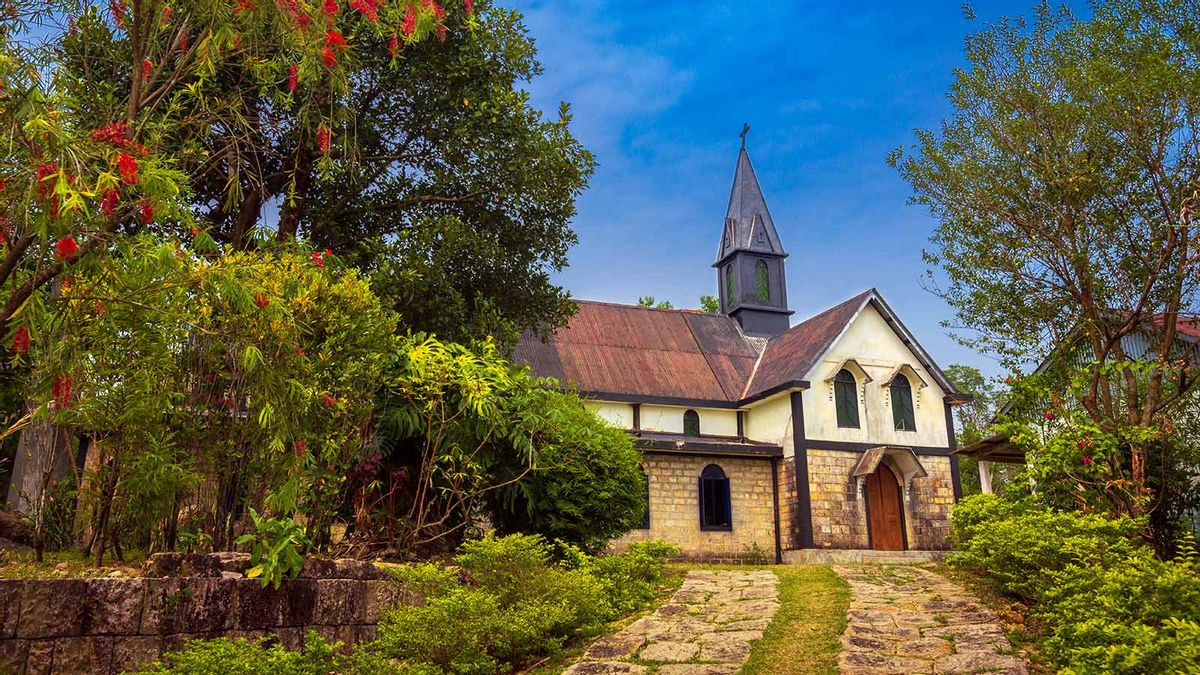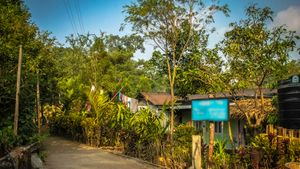I was 22 when I first landed up in Mawlynnong. I am going to admit, it was an accident and I was never supposed to stay the night. But I did, and it turned out to be one of the best decisions of my life. At 22, I would assume most people would say this about prospective partners, but here I am writing about a “place” I fell irrevocably in love with.
Located on the Southern end of East Khasi Hills, Meghalaya, Mawlynnong is a tiny hamlet close to the Bangladesh border. It is touted to be “The Cleanest Village in Asia”. I am usually averse to such tourism gimmicks and so I was certain I would never end up here.
But what can one do when fate is at play, eh?
It so happened that the shared cab that I hopped into from Dawki, was going to make a short pitstop at this village. Share taxis in Meghalaya are notorious for doing their own thing and you just got to play along, so I did. As we reached our destination, everyone disembarked and scattered in different directions. I head to a Kong Shop instead.
Kong shops are small stalls run by Khasi women, that usually sell traditional meals, tea, and local snacks. My tummy began to growl as the lady ushered me in. As I gorged on a mildly sweet pusaw (local red rice cake) and a steaming cup of lal chai, I noticed the silence around. It being a weekday, there were no tourists. Good day to walk around, I thought.
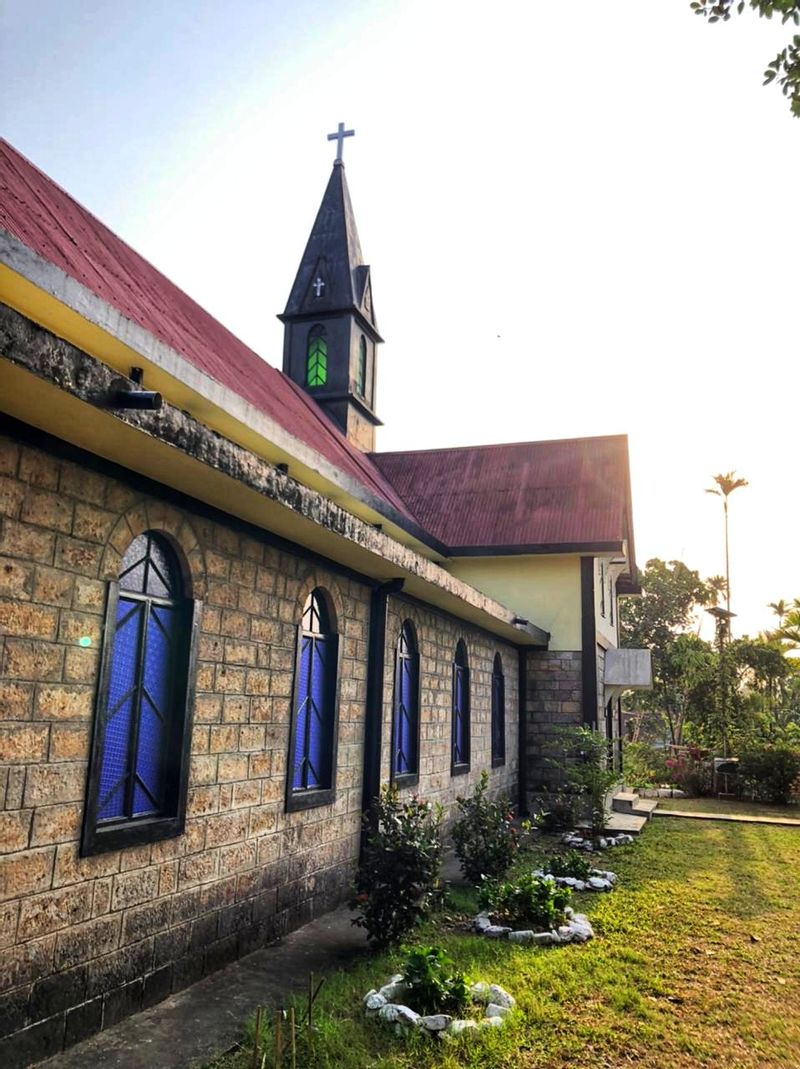
Lined with bougainvillea bushes, orchids and all sorts of other flora, the well laid out alleys of Mawlynnong made for a great first impression. I crossed some colourful houses and reached a church. Built in 1902, this Presbyterian church was picture perfect with its blue stained-glass windows, red-tiled sloping roof and recently white washed walls. Some kids played football in a field behind the church and as I stood there taking in the sights and peace, their ball came flying in.
An incidental travel plan
A little, 7-year-something girl with short hair ran up to me. Her eyes were doe shaped and full of wonder. Her chipped teeth broke into a smile as I handed her the ball.
“Are you alone?” She asked.
“Yes,” I replied.
“You want to come to my house?”
“Now??? I have a taxi waiting for me…I don’t think so…” I reluctantly replied.
“He will wait till 4 pm. You come? Come…” She tugged at my hand. Throwing the ball back to the boys she was playing with.
Ida’s home was right around the church. This was my first time at a traditional Khasi house. It was old, made of wood and seemed quite cosy. As we entered, Ida yelled something loudly, and out came her rather large family. The house didn’t seem big enough to accommodate so many people but still, here they were -smiling, with kwai stained teeth, giggling and whispering to one another. They welcomed me and I noticed none of them spoke English barring Ida. They would say something, and the girl would translate it for me and vice versa.

Amidst the chatter, I lost track of time. So, when I looked at my watch and saw 3:55 pm I was shocked. I apologised and excused myself and dashed through the gate, Ida following. As we ran, the skies changed colour. It’s light orange – pink made the village seem a thousand times more surreal. My decision was made. I was going to stay back in Mawlynnong!
I reached the car and collected my bags. I had no idea how this impromptu decision was going to fare. Ida, who had tagged along, seemed thrilled with my decision. “Live with us,” she said. So, that is what I did.
Living with the locals
Ida’s family ran a homestay. In this village, as in most others in Meghalaya, a different house is given for guests to live in. The cottage that I got to stay in that night was humble and checked a lot of my boxes – pastel yellow walls, sloping roof, a functional washroom and a small bed with a mosquito net. I dumped my bags and freshened up to join the family for some evening tea.
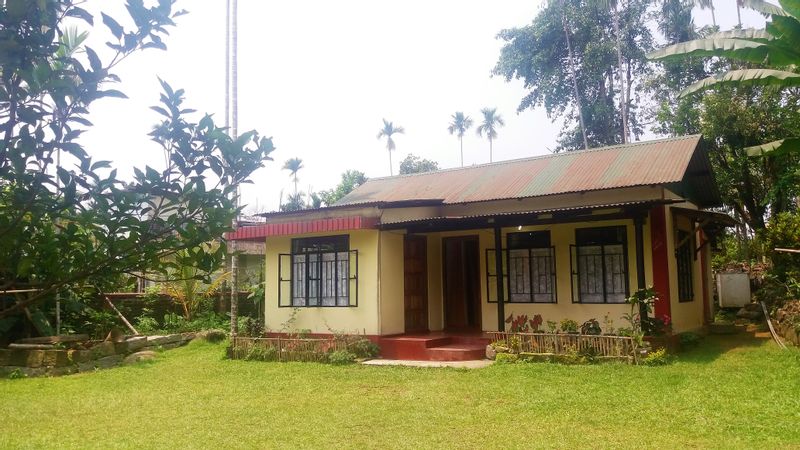
Ida’s grandmother introduced me to a local delicacy- raw Jackfruit with salt. Everyone seemed to enjoy it along with their chai. As we downed copious amounts of tea, it was time to go find some “real food.” Being vegetarian, I had my doubts about finding something palatable in this village. Khasis are known to be meat eaters but to my surprise, I did get lucky. Dinner was rice, black dal, papad, salads and a sweet black rice kheer called biruin ja.

That night, it rained so heavily that the electricity went out.
The next day accompanied by Ida and her siblings, I explored Mawlynnong like a local. Our first stop was a summer haven – a natural stream hidden inside the forests. We swam to our hearts content, and bathed under tiny waterfalls. After this, we hiked up to the Bangladesh view point and soaked in the scenery. Later that morning, the girls went to their school, while I accompanied Ida’s grandma to their farm. The family grew all sorts of crops here – areca, pineapples and their favourite, jackfruit. Once we returned, we gorged on some local snacks. Later that afternoon, an old dilapidated church became the perfect setting for some spooky stories – of curses, demons and gods.
Soaking in Mawlynnong
As we walked across the village, I realized that Mawlynnong had a strange connection with rocks – be it the large ones with craters scattered all around the village, or the ancient balancing rock. The first was the reason the village was called what it was – Maw means stone/rock and Lynnong means scattered around. The balancing rock, on the other hand, was locally revered as an ancient sacrificial stone. But it was more popular among the tourists, who come to see this wonder that has stood the test of time, multiple earthquakes and heavy rains – much like Mahabalipuram’s Krishna’s butterball!
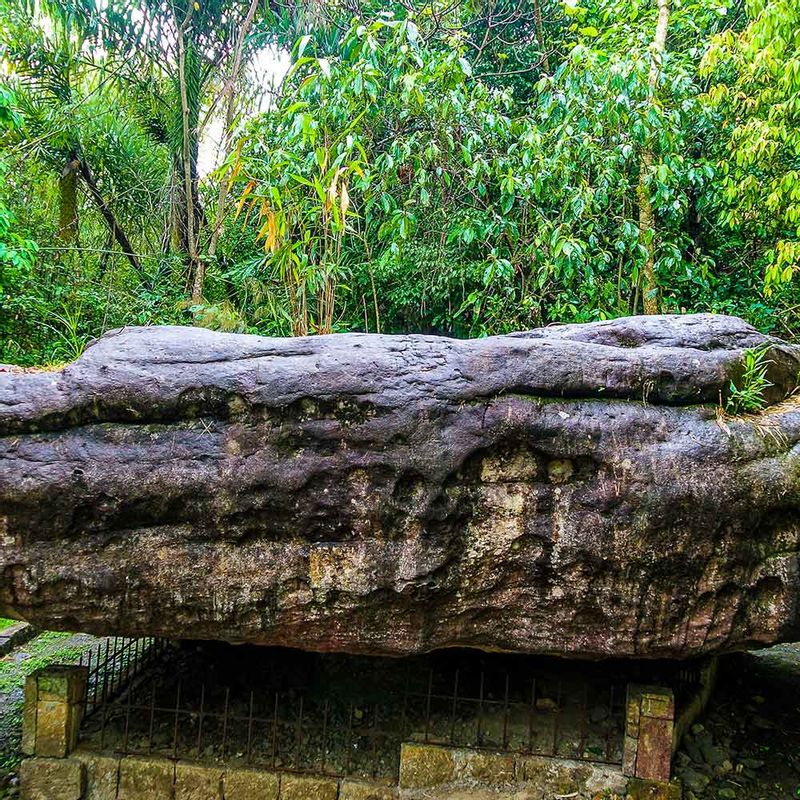
I also noticed that the streets of Mawlynnong were lined with koh baskets – traditional conical wicker baskets that women collect farm produce in. As we entered the village centre, I noticed everyone sweeping the streets. It happens twice every day, I was told. Once in the morning, before tourists come in and once around sunset. Everyone from the kids to the elders participate. It was lovely to see the entire village come together and bond over this simple task. The initiative was started generations ago by a village headman and is still being practiced.
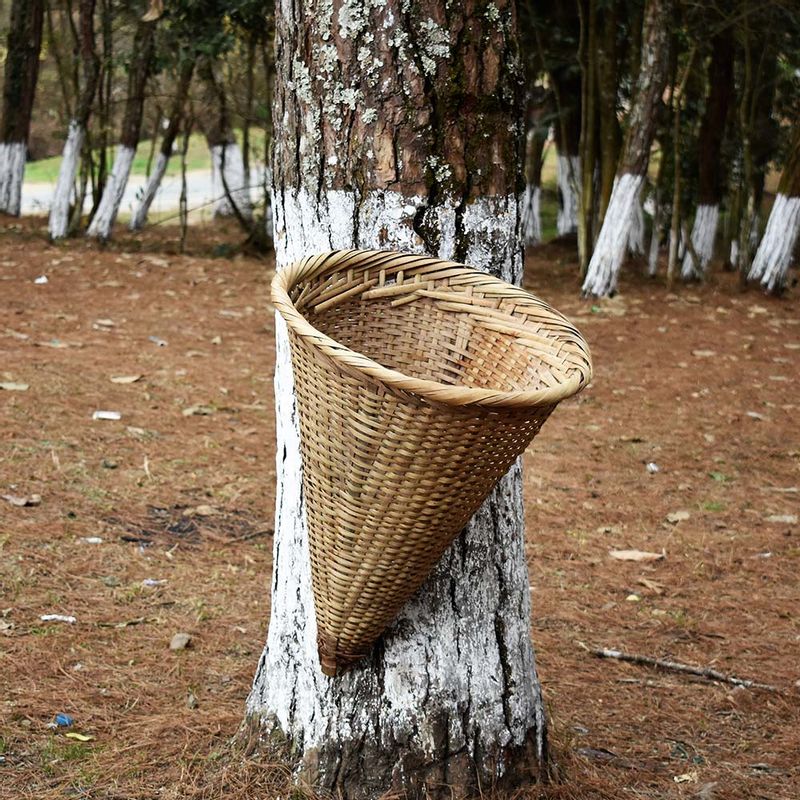
Discover India Magazine claimed Mawlynnong was the cleanest village in Asia in 2003, and since then the title stuck on. Publicity did wonders for the village and with Mawlynnong’s tourism model, there has been a sustainable growth in income for most families here.
Lighting a bonfire, having a traditional meal, swimming in hidden, natural pools and living the rural Khasi life is an essential part of experiencing Meghalaya and here, in Mawlynnong, you get to do all of this and more. From waterfalls to a single root bridge, tree houses to verdant forests – it has it all. The Bonus? A cute, manicured and well-planned village that is picture perfect.
Who knows, you mind find your Ida, Sushila, Vaneza and a whole lot of others. You may just find magic!


